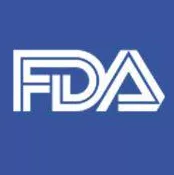Baker Boy Food Safety
Known as one of the most prominent bakeries in the Upper Midwest and Northwest regions of the United States, Baker Boy bakery was growing fast. In fact, the company was growing so fast that it’s legacy software system, Food 6000, just couldn’t keep up with the increasing demands on the business from its customers—particularly when it came to its ability to quickly respond to an incident of food safety, that is, a mock recall.
And that meant it was time for the Dickinson, ND-based company to look for a software and service solution that could help it become more efficient.
“With Food 6000 we didn’t have any manufacturing or recall capabilities,” said Jason Yoder, IT manager of Baker Boy, which manufactures over 400 varieties of frozen, par-baked, and baked products including bread, donuts and muffins. “We had some applications that we had developed in internally that kind of made a stab at getting us some information but they weren’t fully integrated with anything else. It was a very manual, labor intensive process to do a [mock] recall.”
It took the company four hours just to track down one specific lot code on a specific raw material for a mock recall, said Derek Rambousek, scheduling manager at Baker Boy.
“We needed five or six people to run through so much information manually that it was difficult to get the recall in the window we were targeting, which was 4 hours,” Rambousek said. “We wanted an integrated data place where we could do the recalls in minutes versus the hours that it took us before.”
What Baker Boy wanted was an end-to-end enterprise resource planning (ERP) system that had good manufacturing and recall capabilities. Baker Boy executives knew that an ERP system could enable the company to perform a mock recall quickly as well as save money over the “old way” of doing things. The company’s goal was to improve efficiency throughout the entire supply chain meaning from receiving to lot tracking to receivables.
To meet these goals, Baker Boy brought in a consultant who helped the company define its requirements for a new system. Then Baker Boy sent out a full request for proposal to 10 vendors and narrowed down that list to Ross Systems and JustFoodERP. After viewing a demonstration of the two systems, Baker Boy selected JustFoodERP and its Microsoft Dynamics net asset value (NAV)-based ERP system.
“Microsoft Dynamics NAV technology is an attractive solution because it’s a very expandable industry standard platform,” Yoder said. “And the way the JustfoodERP system collected data and the recall capabilities it has built in really [laid] the framework [for our company]. And Dynamics NAV integrates with other Microsoft products like Office, and the SQL Server back end. So, we can do integrate our systems and do data reporting. It’s able to handle everything we throw at it.”
“Microsoft Dynamics NAV has its roots in manufacturing and distribution so it’s always had strong capabilities for tracking items through a supply chain and dealing with things like bar codes to help that process,” said Robert Helm, an analyst at Directions on Microsoft in Kirkland, WA. “And NAV has a strong collection of local service providers and local software vendors building specifically for the food industry. And the fact that they’re local is important because safety regulations are regional and provincial. So NAV can morph into what companies need.”
How well a food company manages a product recall situation, especially when there’s an impact on human health affects the future viability of the product as well as the company’s reputation and “brand equity.”
Deciding to voluntarily withdraw or recall a product, and conducting the recall, requires careful evaluation, including analyzing the reports of adverse incidents, identifying the specific products and product lots to be recalled, among other issues.
Customers, regulators and consumers need to know food companies have control over their inventory and can respond quickly to safety incidents. Mock recalls indicate that a company’s system can handle any potential risks. But capturing this information can be time-consuming and expensive.
Accuracy is an absolute must for compliance as well as to control inventory. Tracking means companies like Baker Boy have to manage the consumption of raw material at the lot level. Many food manufacturers account for raw material consumption by assuming that the standard usage occurred and then use that quantity to reduce the inventory of an ingredient.
“In the case of a recall you’re graded based on how quickly you can recall products,” said Rambousek. “So if we have the raw material that a supplier tells us is contaminated, we need to trace it through to the finished goods. You may have sugar that has a contaminate in it—it [doesn’t even have to] be a health issue. It could be a quality issue. We would have to trace it to what products we put that lot of sugar into. We have to find out who we sold it to, if they still have any on the shelf, if they can pull it and send it back to us so we can replace it.”
Compliance, then, means food companies need to link the ingredients to the finished products—and fast. This can only be done by accurately recording lot numbers and the actual quantity that was consumed. Using data collection methods (such as bar coding and radio-frequency identification), paper, and even computer-based batch sheets generated by the ERP system will help companies link consumption to the finished goods and increase accuracy.
Again, the demands of compliance provide the processes to better manage the business by increasing the accuracy of inventory control and, in doing so, eliminating shortages, overstock, and products that have expired.
The bottom lines is: when companies respond to a recall, they must pull all of the tainted product and none of products that pose no danger to consumers—and they have to do it as quickly as possible.
And now instead of four hours to do track down a raw material, with the Microsoft Dynamics NAV-based system Baker Boy can do it in minutes.
“Running a lot trace is much quicker than it was—but we want to get faster using all the functionality of the software,” Yoder said.
Linda Rosencrance is a freelance writer/editor in the Boston area. She loves writing about technology.
Looking for quick answers on food safety topics?
Try Ask FSM, our new smart AI search tool.
Ask FSM →








